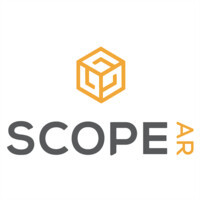Top Augmented Reality Softwares
Augmented Reality software enhances the real-world environment by overlaying digital elements, creating a seamless blend of physical and virtual worlds. This innovative technology is utilized across various sectors, including education, healthcare, retail, and entertainment. By augmenting the user's view with computer-generated sensory input like graphics and sounds, it transforms how information ... Read More
59 companies found
Magic Leap
Product Description
Magic Leap is a company that focuses on creating augmented reality (AR) experiences, specifically through their innovative headsets and software. These headsets overlay digital content onto the real world, providing users with a blended experience of physical and digital elements. By wearing Magic Leap's AR gear, users can see and interact with 3D virtual objects as if they are part of their actua... Read More
Users
- • No Data
Industries
- • No Data
Market Segment
- • No Data
EON Reality
Product Description
EON Reality offers a practical and user-friendly software solution designed to bring augmented and virtual reality (AR/VR) to various industries. By using EON Reality's platform, businesses and educational institutions can create immersive experiences that enhance learning, training, and day-to-day operations. The software does this by allowing users to build and deploy interactive 3D content effo... Read More
Users
- • No Data
Industries
- • No Data
Market Segment
- • No Data
Product Description
Scope AR offers a practical solution for businesses looking to enhance their operational efficiency with augmented reality (AR). The company focuses on creating intuitive AR software designed to simplify the way complex tasks are performed in industries such as manufacturing, field service, and training. Their products are built to be user-friendly, helping employees at various skill levels perfor... Read More
Users
- • No Data
Industries
- • No Data
Market Segment
- • No Data
Product Description
Sketchfab is a leading platform that gives users the ability to publish, share, and discover 3D content online. Designed with ease of use in mind, the software allows creators to upload their 3D models, animations, and virtual reality content so others can view and interact with them directly in their web browsers. Whether you're an artist, designer, educator, or marketer, Sketchfab provides a ver... Read More
Users
- • No Data
Industries
- • No Data
Market Segment
- • No Data
Groove Jones
Product Description
Groove Jones is all about making business operations more straightforward and engaging. Specializing in creating intuitive and interactive software solutions, Groove Jones focuses on providing businesses with tools that enhance user experiences and streamline workflows. The team at Groove Jones understands the importance of simplicity and effectiveness in the tools that businesses use every day. ... Read More
Users
- • No Data
Industries
- • No Data
Market Segment
- • No Data
Product Description
Magicplan is a versatile tool that makes creating floor plans and managing building projects straightforward and efficient. Designed with ease of use in mind, it helps professionals and DIY enthusiasts alike to design and plan spaces without the hassle of traditional methods. By using a smartphone or tablet, magicplan allows users to capture the dimensions and layout of a room just by taking a few... Read More
Users
- • No Data
Industries
- • No Data
Market Segment
- • No Data
Product Description
PlugXR is a software designed to make augmented reality (AR) accessible to everyone, even those without any technical know-how. It aims to remove the complexities usually associated with developing AR experiences. Whether you're a business looking to enhance your marketing campaigns, an educator wanting to add an interactive layer to your teaching materials, or an individual curious about AR, Plug... Read More
Users
- • No Data
Industries
- • No Data
Market Segment
- • No Data
CitrusBits
Product Description
CitrusBits is a digital agency that specializes in creating custom mobile apps and intuitive user experiences. If you're looking to enhance your business operations or reach more customers through a mobile platform, CitrusBits can help make that happen. We focus on developing tailor-made solutions that not only meet your specific needs but also simplify the user experience for your customers. Wha... Read More
Users
- • No Data
Industries
- • No Data
Market Segment
- • No Data
Product Description
Augmania is a user-friendly platform designed to help businesses and marketers create immersive augmented reality (AR) experiences without needing technical skills. It provides a straightforward way for users to engage their audiences through interactive content like 3D animations, filters, and effects that can be accessed via smartphones and other devices. The platform allows you to easily desig... Read More
Users
- • No Data
Industries
- • No Data
Market Segment
- • No Data
Gravity Jack
Product Description
Gravity Jack is a company that stands at the forefront of innovation, specializing in custom software development with an emphasis on augmented reality (AR) and virtual reality (VR) solutions. They are passionate about crafting digital experiences that are engaging, interactive, and tailored to meet specific business needs. Founded in 2009, Gravity Jack brings a wealth of experience to the table,... Read More
Users
- • No Data
Industries
- • No Data
Market Segment
- • No Data
What is Augmented Reality software and how does it work?
Augmented Reality software bridges the gap between the physical and digital worlds. This software overlays digital information such as images, sounds, or other data onto a user's view of the real world. By utilizing devices such as smartphones, tablets, or AR glasses, users can interact with these augmented environments in real-time.
Core Functionality
At its core, Augmented Reality software merges real and virtual worlds. It captures data from the physical world via camera or sensors. This data is processed to identify real-world elements which will act as anchor points for digital overlays.
Components of Augmented Reality Software
-
Tracking and Registration: This involves detecting and tracking the position and orientation of the user's viewpoint within the physical space. It allows the digital content to align accurately with the real world.
-
Communication Interface: Facilitates interaction between users and digital elements. It might involve gestures, voice commands, or touch inputs.
-
Rendering Engine: The rendering engine processes visual data and overlays digital graphics onto the real-world view. It ensures that the graphics are rendered in real-time, maintaining alignment with the user's perspective.
How Augmented Reality Software Works
-
Device Setup: Requires a compatible device equipped with a camera, display, and sometimes additional sensors.
-
Environment Capture: The device captures the user's physical environment through its camera.
-
Data Processing: The software processes real-time environmental data to identify and understand the physical context.
-
Content Integration: Based on the processed data, digital content like images, sounds, or videos is superimposed over the real-world view.
-
User Interaction: Users can interact with the digital components of the scene, offering an immersive experience.
Applications
Augmented Reality software finds applications across various fields. In education, it can provide interactive learning experiences by visualizing complex concepts. Retail uses Augmented Reality software to offer virtual try-ons for customers. In healthcare, it aids in complex procedures by overlaying critical information during surgery. Industrial use involves visualizing data over machinery for repair or assembly tasks.
Implementation Challenges
Despite its potential, implementing Augmented Reality software presents challenges like ensuring real-time processing speeds and accurate object tracking. Achieving seamless interaction between real and digital elements is often a technical hurdle.
Conclusion
Understanding how Augmented Reality software works requires recognizing its ability to blend digital elements with real-world contexts. By leveraging device capabilities, it offers enhanced visual and interactive experiences across various sectors.
This overview captures the essence of Augmented Reality software, highlighting its significance in modern technology landscapes.
How can Augmented Reality software be used in education and training?
Enhances Interactive Learning
Augmented Reality software transforms educational settings through enhanced interactive learning experiences. By overlaying digital content onto the physical world, students can engage with subjects in a more immersive manner. This interaction allows for better understanding and retention of information. For instance, in science classes, students can visualize complex molecular structures or see the functions of organs in real-time, offering a deeper insight into the subject matter.
Facilitates Experiential Learning
Experiential learning is pivotal in education, and Augmented Reality software makes it more applicable and accessible. Students can simulate historical events, virtually walk through ancient civilizations, or even construct engineering models. This approach helps students develop critical thinking and problem-solving skills by applying theoretical knowledge in realistic scenarios.
Promotes Inclusive Education
Augmented Reality software contributes to inclusive education by offering personalized learning experiences. Students with different learning abilities can benefit from customized content that aligns with their learning pace and style. Those with visual impairments can use AR applications designed to augment their senses, enabling them to participate more fully in educational activities. By adapting to individual needs, AR tools ensure that all students have access to quality education.
Provides Safe Training Environments
In fields requiring extensive practical training, such as healthcare and aviation, Augmented Reality software provides safe environments for practice. Trainees can perform procedures or maneuvers in controlled AR settings without the risks associated with real-world errors. By simulating real-life challenges, practitioners gain valuable experience and confidence while improving their skills. This safe practice ground is crucial for industries where errors can have significant repercussions.
Bridges the Gap in Remote Learning
Augmented Reality software plays a crucial role in bridging the gap between in-person and remote learning. AR applications enable students and educators to interact in virtual spaces as if they were in a physical classroom. Virtual laboratories, collaborative projects, and live demonstrations are made possible, enriching the learning experience beyond physical limitations. This capability is particularly valuable in maintaining educational continuity during unforeseen disruptions.
Encourages Creative Expression
Augmented Reality software fosters creative expression by allowing students to visualize and create their content. Learners can design 3D models, animations, and other multimedia projects within AR environments. This creative freedom promotes innovation and critical thinking, encouraging students to explore new ideas and solutions. By providing tools that support creativity, AR enhances the overall educational experience.
Increases Motivation and Engagement
Using Augmented Reality software in education significantly boosts motivation and engagement. Interactive AR experiences capture students' attention, making learning more enjoyable and compelling. By transforming traditional lessons into dynamic adventures, educators can increase student participation and interest in the subject matter. The use of gamification elements in AR applications also contributes to higher levels of engagement, motivating students to achieve their educational goals.
What are the benefits of using Augmented Reality software in marketing?
Increased Engagement
Augmented Reality software allows brands to create interactive experiences that capture consumer attention. By overlaying digital elements onto the real world, it entices users to engage longer with content. This heightened interaction can lead to better retention of information and a deeper connection with the brand. When consumers interact with branded content directly, the likelihood of conversion increases significantly.
Enhanced Personalization
With Augmented Reality software, marketers can deliver personalized experiences that resonate on a personal level. AR tools can offer users tailored content based on their preferences, location, or past interactions. This personalization not only improves user experience but also increases the chances of a purchase decision. Customized AR content can bridge the gap between consumer interests and brand offerings.
Innovative Product Visualization
One significant benefit is that Augmented Reality software enables consumers to visualize products in a real-world context. Users can see how an item fits into their life, whether it's placing a virtual sofa in their living room or trying on virtual clothing. This capability reduces uncertainty and helps consumers make informed purchase decisions, leading to higher satisfaction rates and a lower rate of returns.
Improved Brand Awareness
Augmented Reality software offers unique ways to boost brand visibility. By utilizing AR campaigns, brands can create memorable experiences that differentiate them from competitors. These experiences are often shareable, prompting users to spread brand content through social media and word-of-mouth. The novelty and impact of AR experiences can significantly enhance brand recognition and recall.
Cost-Effective Marketing Tool
While AR experiences might seem costly to develop, they can be more cost-effective than traditional marketing methods in the long run. Augmented Reality software can reduce the need for physical promotional materials and events. For example, virtual try-ons or virtual tours can replicate the effects of in-store experiences without additional physical resources.
Real-Time Analytics and Feedback
Augmented Reality software provides the advantage of gathering real-time data through user interaction. Marketers can track how consumers interact with AR features and gather insights into consumer behavior and preferences. These analytics help refine marketing strategies and enhance content effectiveness, providing a direct look into what resonates with audiences.
Increased Customer Retention
By employing Augmented Reality software, brands can foster long-term customer loyalty. AR experiences are engaging and memorable, which can increase customer satisfaction. Happy customers are more likely to return and engage with the brand again, fostering a loyal customer base. Repeated positive interactions helped by AR often translate into sustained brand allegiance.
Differentiated Customer Experience
In a crowded marketplace, standing out is essential. Augmented Reality software offers brands a unique way to deliver unforgettable customer experiences. By creating immersive and cutting-edge content, brands distinguish themselves from competitors. The tailor-made experiences also cater to tech-savvy consumers seeking novel ways to interact with brands, setting companies apart in the competitive landscape.
How does Augmented Reality software enhance gaming experiences?
Introduction to Augmented Reality in Gaming
Augmented Reality software plays a transformative role in gaming by overlaying digital elements onto the real world, creating an immersive and interactive experience. This technology merges the physical and digital worlds, offering gamers unprecedented interaction and engagement.
Increases Immersion and Engagement
Augmented Reality software enhances gaming experiences by increasing immersion. By integrating digital content with the physical environment, players feel more connected to the game. This level of engagement is achieved through realistic interactions with virtual elements, which can be tailored to real-world surroundings. As a result, environments dynamically adapt to players' locations, making the game feel more intimate and engaging.
Expands Physical Play Spaces
This software allows for the expansion of gaming environments beyond the confines of screens. Players are no longer limited to a fixed gaming device; instead, they can interact with games using physical movements in open spaces. Such spatial expansion not only enriches the gameplay but also encourages physical activity, making gaming an active experience.
Facilitates Social Interaction
Augmented Reality software promotes social interaction among players by providing shared experiences in multi-player AR games. Players can collaborate or compete in physical spaces, forming real-time social connections. These interactions foster a sense of community and camaraderie, blending the social aspects of gaming with face-to-face interaction.
Provides Real-Time Feedback
Games developed with Augmented Reality software offer real-time feedback, which is crucial for improving user experience. The immediate visual and auditory responses enhance the game’s dynamics, enabling players to make quick decisions and adjustments. This instant feedback loop helps maintain excitement levels and keeps players engaged.
Enhances Creativity and Problem Solving
AR games requiring creativity and problem-solving skills benefit significantly from Augmented Reality software. By posing challenges that players must physically navigate, games encourage strategic thinking and innovation. Players often interact with digital puzzles overlaying the real world, challenging them to think outside the box.
Creates Personalized Experiences
Augmented Reality software creates opportunities for personalized gaming experiences. By leveraging data from players' environments and preferences, AR games can tailor content, making the experience unique to each individual. This personalization leads to deeper engagement, as players encounter game elements that align closely with their interests and surroundings.
Promotes Educational Value
Alongside entertainment, AR games integrated with educational content can enhance learning experiences. Augmented Reality software introduces concepts and skills in an engaging and interactive manner, transforming traditional educational methods. Through dynamic storytelling and interactive tasks, players learn while being entertained.
Conclusion
Overall, Augmented Reality software enriches gaming experiences by enhancing immersion, promoting social interaction, providing real-time feedback, fostering creativity, and offering personalized and educational value. These aspects make AR gaming unique and increasingly popular among diverse audiences.
What are the hardware requirements for running Augmented Reality software?
Augmented Reality (AR) software requires specific hardware to function efficiently. The primary components that impact AR performance include the processor, graphics processing unit (GPU), memory, storage, camera, sensors, and display. Each of these components plays a crucial role in ensuring smooth AR experiences. Below, we explore these hardware requirements in detail.
Processor
The processor, or central processing unit (CPU), is a critical component for running Augmented Reality software. A fast and powerful CPU ensures seamless processing of data and real-time rendering. For optimal performance, modern multi-core processors are preferred. These CPUs efficiently handle the complex computations necessary for AR applications.
Graphics Processing Unit (GPU)
The GPU is vital for managing the visual demands of Augmented Reality software. A high-performance GPU enhances the realism of AR experiences by providing smoother graphics and better rendering. Ideally, a dedicated GPU with ample video memory (VRAM) is recommended. This ensures that the AR software can process and display high-resolution textures and complex 3D models efficiently.
Memory (RAM)
Augmented Reality software requires sufficient RAM to operate smoothly. Adequate RAM allows for quick access to data and facilitates fast application performance. A minimum of 4GB of RAM is generally recommended, but 8GB or more is preferable for handling more complex AR applications. More memory helps in managing the data-intensive tasks associated with AR experiences.
Storage
AR applications often involve the storage of large files, including 3D models and high-resolution textures. Therefore, a robust storage solution is essential. Solid-state drives (SSDs) are preferred over traditional hard drives due to their faster read and write speeds. An SSD ensures quick loading of AR content and helps in reducing delays in application performance.
Camera
Cameras are crucial for capturing real-world environments and enabling Augmented Reality software to overlay digital information seamlessly. A high-resolution camera improves the accuracy and quality of the AR experience. The camera must also support features like autofocus and image stabilization to enhance the overall application performance.
Sensors
Sensors are essential for tracking motion and orientation in AR environments. Common sensors used in devices running Augmented Reality software include accelerometers, gyroscopes, and magnetometers. These sensors help in accurately detecting device movement and orientation, which are vital for aligning virtual elements with the real world accurately.
Display
A high-quality display is necessary for viewing Augmented Reality software effectively. The display should have a high resolution to ensure clarity and sharpness of the AR content. Additionally, a display with a high refresh rate is beneficial for reducing motion blur and providing a smooth user experience.
In summary, running Augmented Reality software requires a combination of capable hardware components, including a powerful CPU, high-performance GPU, adequate RAM, fast storage, high-resolution camera, essential sensors, and a quality display. These elements work together to deliver immersive and responsive AR experiences.
How can businesses integrate Augmented Reality software into their operations?
Enhancing Customer Engagement
Augmented Reality software can enhance customer engagement by creating immersive experiences. Retailers can integrate this software to allow customers to virtually try on products like clothing or accessories. By overlaying digital content in real-world environments, businesses can provide an interactive shopping experience. This increases customer satisfaction and reduces return rates, as it allows buyers to make more informed decisions.
Streamlining Training Processes
Companies can use Augmented Reality software to optimize training programs. By providing workers with augmented instructions and simulations, businesses can reduce training time and improve retention. AR allows for experiential learning by immersing employees in a virtual environment where they can practice skills, making the learning process more efficient and engaging. This method is particularly beneficial in industries where safety and precision are critical, such as healthcare and manufacturing.
Improving Product Design and Prototyping
In product development, Augmented Reality software can foster collaboration among design teams by visualizing prototypes in 3D. This allows designers to manipulate and interact with models before manufacturing, identifying potential design flaws early. Using AR for prototyping not only speeds up the design process but also cuts costs by reducing the need for physical prototypes.
Enhancing Marketing and Advertising Strategies
Augmented Reality software plays a significant role in revolutionizing marketing strategies. Businesses can create AR marketing campaigns that captivate audiences through interactive and memorable experiences. For instance, a company can develop an AR application that allows potential customers to see how a product will fit into their space or lifestyle. Such marketing techniques can drive user engagement and brand recall, offering a unique value proposition.
Supporting Remote Assistance and Collaboration
AR can facilitate remote assistance by enabling experts to provide guidance through visual cues. Technicians and field workers can receive real-time support using AR devices, which overlay information and instructions directly onto their field of view. Augmented Reality software can improve collaboration across teams by allowing them to share and manipulate data in real-time, fostering efficient problem-solving processes.
Elevating Operational Efficiency
Businesses can deploy Augmented Reality software to optimize daily operations. For logistical purposes, AR can streamline warehouse management by helping workers locate and identify inventory through visual overlays. This reduces errors and improves time management. In maintenance tasks, workers can visualize instructions on equipment, leading to faster and more accurate repairs, thus increasing uptime and productivity.
Augmenting Event Experiences
In events and exhibitions, AR can transform the attendee experience by providing interactive content. Attendees can use Augmented Reality software to access additional information, participate in virtual demonstrations, or engage with digital exhibits. This technology enriches the experience and encourages attendee interaction, fostering greater engagement and knowledge retention.
By leveraging the capabilities of Augmented Reality software, businesses across various sectors can enhance their operations, improve customer experiences, and gain a competitive advantage. Each integration method provides unique opportunities to streamline processes, increase efficiency, and create value for both customers and the business.
What are the latest trends in Augmented Reality software development?
Immersive User Experiences
Augmented Reality software is undergoing significant evolution in creating more immersive user experiences. This trend focuses on blending the virtual with the real world seamlessly. AR is being designed to deliver high-quality visuals and interactive elements, offering users an engaging experience. Real-time interaction has become key in providing users with deeper immersion, increasing demand for headsets and smart glasses that support complex AR applications.
Artificial Intelligence Integration
Another major trend in Augmented Reality software is the integration of Artificial Intelligence (AI). AI enhances AR applications by offering capabilities like real-time object detection and facial recognition. Through machine learning algorithms, AR systems can analyze the environment and provide more relevant and interactive content tailored to the user's context. This integration is setting the stage for more personalized and intelligent AR applications across various industries.
Cloud-Based AR Solutions
Cloud computing plays a pivotal role in the development of Augmented Reality software. With cloud-based AR solutions, developers can process data and complex graphics off-device, reducing hardware dependency. This allows for the creation of more lightweight AR apps that are accessible on a wider range of devices. The use of cloud services also enables easy updates and scalability, making it a convenient choice for businesses looking to deploy AR applications rapidly.
Augmented Reality in Retail
Retail is a sector benefitting greatly from advancements in Augmented Reality software. Retailers use AR to enhance shopping experiences through virtual try-ons, product visualizations, and store navigation. Augmented Reality software helps customers visualize how products will look or fit in real life, thus influencing purchasing decisions. This trend is gaining momentum as businesses seek new ways to engage customers and provide value-added services.
Collaboration and Communication
AR is transforming how teams collaborate and communicate, especially in remote work scenarios. Augmented Reality software facilitates virtual meetings where participants can interact with 3D models and digital whiteboards, creating collaborative and interactive experiences. This technology supports industries like architecture, engineering, and healthcare, where visual aids and spatial understanding are crucial.
Enhanced AR Tracking Systems
Developers are placing emphasis on improving tracking systems in Augmented Reality software. Enhanced tracking systems ensure more accurate placement and movement of AR elements in the real world. These advancements reduce latency and improve the stability of AR applications. High-precision tracking is becoming essential for scenarios where precise measurements and spatial alignment are required, such as in training simulations and interactive gaming.
5G and Edge Computing Synergy
The deployment of 5G networks is accelerating the capabilities of Augmented Reality software. With higher bandwidth and lower latency, AR applications can deliver smoother and more reliable experiences. Edge computing, when combined with 5G, allows for processing closer to the user, resulting in faster data processing and reduced lag. This synergy is opening new horizons for real-time AR applications in fields like gaming, entertainment, and live events.
Gesture and Voice Recognition
Augmented Reality software is incorporating gesture and voice recognition to improve user interaction. These technologies allow for more intuitive control and navigation of AR experiences without relying on traditional input methods. Trending developments focus on enhancing the accuracy and responsiveness of these input modalities, paving the way for more natural and immersive user engagements.









